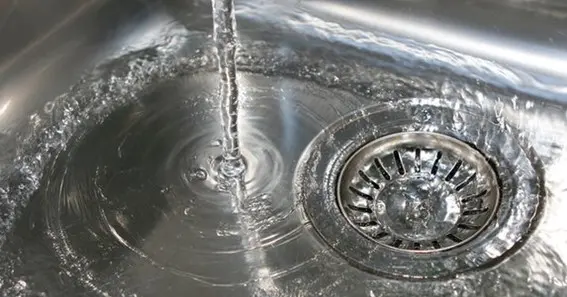Clogged drains can be a real pain, but there’s a simple way to keep them clear—drain strainers. These little tools are easy to use and can save you from a lot of trouble. Let’s explore what drain strainers are, why they’re useful, and how you can use them to keep your home running smoothly.
What Are Drain Strainers?
Drain strainers, also known as drain covers or drain screens, are small, mesh-like covers that sit over or inside your drain. They catch things like hair, food bits, and other small debris before they go down the drain and cause a clog. You can find drain strainers made of metal, plastic, or silicone.
Also Read N: If I Make $80000 A Year How Much Tax Return: Estimating Your Refund
Types Of Drain Strainers

There are different types of drain strainers for various parts of your home:
- Sink Strainers: These are used in kitchen sinks to catch food scraps. They usually have tiny holes to trap even the smallest pieces of food.
- Bathtub Strainers: These fit over your bathtub drain and catch hair and soap residue.
- Shower Strainers: Similar to bathtub strainers, they are used in showers to catch hair and debris.
- Floor Drain Strainers: These are for floor drains in places like basements or laundry rooms. They help keep dirt and large debris from entering the drain.
Also Read P: Juan Piso Wifi: Affordable Internet For All
Why Use Drain Strainers?
Using drain strainers offers several benefits:
- Prevent Clogs: They stop debris from going down the drain and causing blockages.
- Save Money: By preventing clogs, you save money on plumbing repairs and professional drain cleaning.
- Easy to Clean: Drain strainers are easy to remove, empty, and rinse off.
- Protect Your Plumbing: They help keep your pipes clean and free from damage, extending their lifespan.
How To Choose The Right Drain Strainer?

When picking a drain strainer, consider these points:
- Size: Make sure the strainer fits your drain. Measure the drain opening to find the right size.
- Material: Choose a material that works for you. Stainless steel is durable, while silicone is flexible and easy to clean.
- Type: Pick the right type for each drain. Kitchen sinks, bathtubs, showers, and floor drains need different kinds of strainers.
- Ease of Cleaning: Look for strainers that are easy to remove and clean.
Installing And Maintaining Your Drain Strainers
Putting in a drain strainer is simple. Most just sit over the drain, while some fit inside the drain opening. Follow the instructions that come with the strainer.
To keep your drain strainers in good shape, clean them regularly. For kitchen strainers, empty the food scraps into the trash and rinse the strainer. For bathroom strainers, remove hair and soap residue and rinse with warm water. Occasionally, soak the strainers in a mix of water and vinegar to remove stubborn grime.
Detailed Guide To Types Of Drain Strainers

While the basic idea of drain strainers remains the same, the specifics can vary. Here’s a deeper dive into the types of drain strainers and their particular uses:
- Mesh Sink Strainers: These strainers are typically made of stainless steel mesh and are placed over the sink drain. They are especially useful for catching small food particles that could otherwise lead to blockages. Because they are made of fine mesh, they can trap even the smallest debris while allowing water to flow freely.
- Rubber Sink Stoppers: These are rubber-based strainers that can also function as stoppers when needed. They fit snugly over the sink drain and are great for preventing larger food particles from slipping through.
- Flat Sink Strainers: These are flat metal or plastic strainers that sit on top of the drain opening. They are easy to lift out and clean and are effective at catching larger particles.
- Pop-Up Strainers: Common in bathroom sinks, these strainers are integrated into the sink’s plumbing and can be opened or closed using a lever. They are effective at catching hair and other small debris.
- Shower Drain Hair Catchers: Designed specifically for showers, these strainers sit over the shower drain and catch hair, which is one of the most common causes of shower drain clogs.
- Bathtub Strainer Stoppers: These serve a dual purpose, acting both as a strainer to catch hair and as a stopper to hold water in the tub. They are usually made of a combination of metal and rubber.
- Floor Drain Strainers: These strainers are placed over floor drains, often found in basements, laundry rooms, and garages. They are larger and designed to catch bigger debris like leaves, dirt, and other items that could enter the drain and cause a blockage.
Benefits Of Using Drain Strainers
Understanding the benefits of drain strainers can help you appreciate why they are a necessary addition to your home:
- Prevent Clogs: The primary benefit of drain strainers is their ability to prevent clogs. By catching debris before it enters your plumbing system, you reduce the risk of blockages.
- Cost Savings: Regularly using drain strainers can save you money on plumbing repairs and professional drain cleaning services. A simple drain strainer can help you avoid the high costs associated with clogged drains.
- Easy Maintenance: Drain strainers are designed to be easy to clean. Most models can be quickly removed, emptied, and rinsed off, making it simple to keep your drains clear.
- Prolonged Plumbing Life: By keeping debris out of your pipes, drain strainers help protect your plumbing system from damage, which can prolong its lifespan and save you from costly repairs or replacements.
- Environmentally Friendly: Using drain strainers can reduce the need for harsh chemical drain cleaners, which are harmful to the environment. Preventing clogs naturally is a more eco-friendly solution.
How To Maintain Your Drain Strainers?
Keeping your drain strainers clean and in good working condition is crucial for their effectiveness. Here are some tips:
- Regular Cleaning: Regularly clean your drain strainers by removing any trapped debris and rinsing them with warm water. For more thorough cleaning, you can use a mixture of water and vinegar to remove any stubborn residue.
- Check for Damage: Inspect your strainers regularly for any signs of damage. If the mesh is torn or the strainer is otherwise compromised, replace it to ensure it continues to function effectively.
- Proper Disposal of Debris: When emptying your drain strainers, be sure to dispose of the debris properly. Food scraps should go into the trash or compost, and hair and other debris should be discarded appropriately.
- Soak in Vinegar: For a deep clean, soak your strainers in a solution of water and vinegar. This can help break down any built-up grime and keep your strainers clean and effective.
Conclusion
Drain strainers are a simple and effective way to prevent clogs and protect your plumbing. Whether for your kitchen sink, bathtub, shower, or floor drains, there’s a strainer that fits your needs. By choosing the right strainer and keeping it clean, you can keep your drains clear and avoid plumbing problems. So, get some drain strainers today and enjoy hassle-free drains!
FAQ
What Are Drain Strainers And How Do They Work?
Drain strainers are small mesh-like covers that sit over or inside your drain to catch debris like hair, food bits, and other particles before they go down the drain and cause clogs. They allow water to pass through while trapping potential clogging materials.
How Often Should I Clean My Drain Strainers?
It’s best to clean your drain strainers regularly to keep them effective. For kitchen sink strainers, clean them daily or after each use. The bathroom sink and shower strainers should be cleaned at least once a week to remove hair and soap residue. Floor drain strainers can be checked and cleaned monthly or as needed.
Can I Use The Same Type Of Drain Strainer For All My Drains?
No, different drains require different types of strainers. Kitchen sinks, bathtubs, showers, and floor drains each have specific strainers designed for their unique needs. Make sure to choose the appropriate type for each drain to ensure optimal performance.
How Do I Install A Drain Strainer?
Installing a drain strainer is simple. Most drain strainers just sit over the drain opening. For strainers that fit inside the drain, insert them snugly into the drain hole. Always follow the specific instructions that come with your strainer to ensure proper installation.
What Materials Are Drain Strainers Made From, And Which Is The Best?
Drain strainers are commonly made from stainless steel, plastic, or silicone. Stainless steel strainers are durable and long-lasting, making them ideal for kitchen sinks. Plastic strainers are lightweight and affordable but may wear out faster. Silicone strainers are flexible and easy to clean, making them a good choice for bathroom drains. The best material depends on your specific needs and preferences.










